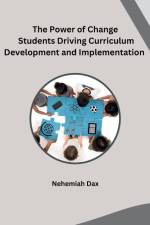av Nehemiah Dax
359,-
The Evolution of Traditional Curriculum DevelopmentIn the ever-changing landscape of education, it is crucial for students to understand the evolution of traditional curriculum development. As students, you play a vital role in driving curriculum development and implementation. This subchapter aims to provide you with insights into the historical progression of curriculum development and its impact on educational leadership and policy.Traditional curriculum development was primarily focused on content delivery and standardization. It operated under the assumption that all students should be taught the same material in the same way. This approach limited creativity, critical thinking, and individuality. However, as educational systems around the world faced numerous challenges and changes, the need for a more student-centered approach became evident.The shift towards student-driven curriculum development began in the late 20th century. Educators and policymakers recognized the importance of tailoring education to meet the diverse needs, interests, and abilities of students. This shift was influenced by the increasing emphasis on student voice and agency, as well as the recognition that students are capable of actively participating in shaping their own education.One of the significant milestones in the evolution of curriculum development was the introduction of outcome-based education (OBE). OBE shifted the focus from content delivery to the desired outcomes of education. It emphasized what students should know and be able to do, rather than simply covering a predetermined curriculum. This approach allowed for flexibility, adaptability, and a focus on skills development.Another important aspect of the evolution of curriculum development is the integration of technology. The digital age has transformed the way we access information, collaborate, and learn. Technology has opened up new possibilities for personalized and adaptive learning experiences. Students today have access to a wealth of resources, online platforms, and tools that enable them to explore their interests and engage in meaningful learning experiences.Student-driven curriculum development has also led to a greater emphasis on project-based learning, experiential learning, and interdisciplinary approaches. These pedagogies encourage students to apply their knowledge and skills to real-world problems, fostering critical thinking, collaboration, and creativity.As future leaders and policymakers, it is essential for you to understand the evolution of curriculum development. By familiarizing yourselves with the historical context and current trends, you can actively participate in shaping the future of education. Your voices matter, and by advocating for student-centered approaches, you can drive positive change in educational leadership and policy

